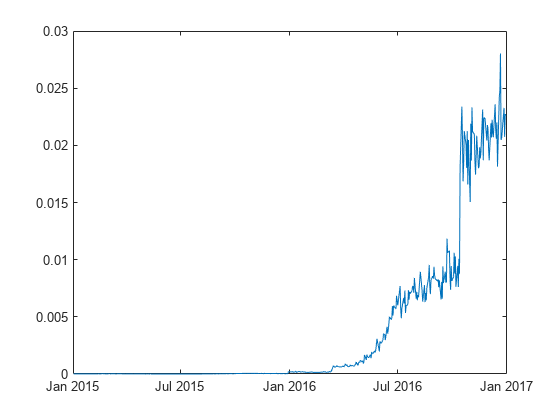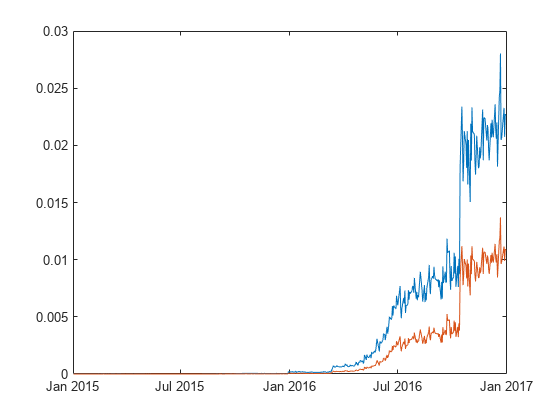mertonByTimeSeries
Estimate default probability using time-series version of Merton model
Syntax
Description
Examples
Input Arguments
Name-Value Arguments
Output Arguments
More About
Algorithms
Given the time series for equity (E), liability (L),
risk-free interest rate (r), asset drift (μA), and
maturity (T), mertonByTimeSeries sets up the
following system of nonlinear equations and solves for a time series asset values
(A), and a single asset volatility
(σA). At each time period
t, where t =
1...n:
where N is the cumulative normal distribution. To simplify the notation, the time subscript is omitted for d1 and d2. At each time period, d1, and d2 are defined as:
The formulae for the distance-to-default (DD) and default probability (PD) at each time period are:
References
[1] Zielinski, T. Merton's and KMV Models In Credit Risk Management.
[2] Loeffler, G. and Posch, P.N. Credit Risk Modeling Using Excel and VBA. Wiley Finance, 2011.
[3] Kim, I.J., Byun, S.J, Hwang, S.Y. An Iterative Method for Implementing Merton.
[4] Merton, R. C. “On the Pricing of Corporate Debt: The Risk Structure of Interest Rates.” Journal of Finance. Vol. 29. pp. 449 – 470.
Version History
Introduced in R2017a

